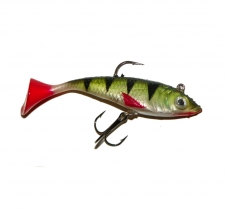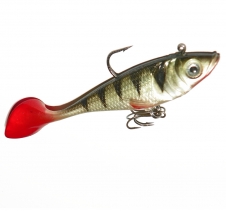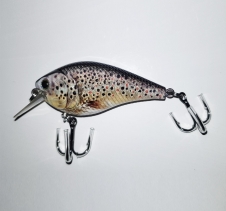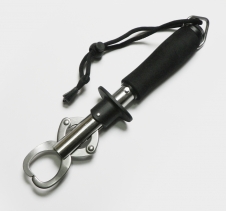Visit Our Online Store! $7 AusPost Parcel Post Delivery FREE Postage for orders $45 and over!
* Shipping rates above apply to Australian Customers only
Rainbow Trout History : The worlds most popular sporting fish.
We explore the American origins of the rainbow trout and how this paved the way for Australian introduction.
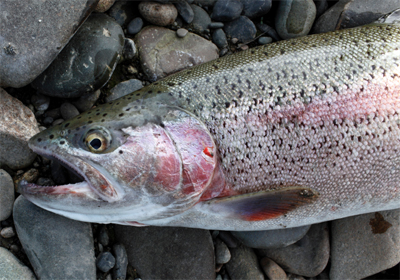
Kamchatkan (Steelhead) Rainbow Trout
[Oncorhynchus mykiss mykiss / Kamchatka Peninsula, Russia]
[Oncorhynchus mykiss mykiss / Kamchatka Peninsula, Russia]
The eggs hatch between one and two months later. Should they survive, these trout will in future enter the oceans to replace the parent stock. Some adult rainbow trout complete multiple spawning sessions within a lifetime, while others may not survive beyond the first spawning event. Young trout can spend up to 3 years in freshwater before finally undergoing the changes required to enter salt water and survive at sea. The term given to trout living in this manner is known as 'sea run', and the name for these fish is commonly referred to as 'Steelhead'.
During the 1800's it was found that 'sea run steelhead' did not actually require the sea phase in order to survive and spawn, from this it was determined that these fish could potentially be raised in a farmed setting and exported to freshwater systems throughout the states, with the potential for export once refined. In 1870, the first North American Trout hatchery opened at San Dreadndro Creek, a tributary of San Francisco Bay. By 1875 the business was ready to deliver their first round of farm raised trout to Caledonia, New York. The shipment was a success and following this trout was again sent for stocking to Northville, Michigan in 1876.
In 1877 the first United States federal hatchery began operating from Campbell Creek, a tributary of McCloud River, California. The difference in the methods used at the McCloud River hatchery was the mixing of sub-species. Coastal rainbow trout eggs (Oncorhynchus mykiss irideus [steelhead]) were mixed with the eggs of local McCloud River redband trout (Oncorhynchus mykiss stonei), this combination spawned the variety of rainbow trout which was exported throughout most of the world.
New Zealand began stocking rainbow trout from the California hatchery between 1877 and 1883. In 1894, the first Australian supply of rainbow trout arrived in New South Wales from New Zealand.
Demand for stocking in the United States is believed to have increased during the industrial revolution, as more Americans began working in factories, they sought outdoors activities which did not require extensive travel time or days away from work. It is assumed due to these new work requirements, trout became widely distributed throughout the United States, and the tradition of trout stocking began. From this, many local self sustaining wild trout populations began to flourish throughout inland America.
Today most countries have established their own hatcheries for rainbow trout, and these regionally raised fish are stocked to lakes and rivers in most countries worldwide. The species has come a long way from their original 'sea-run steelhead' origins.
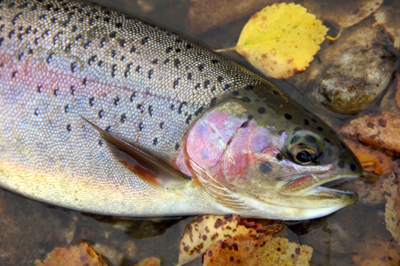
Common Rainbow Trout Found In Most Freshwater Rivers & Lakes
The diet of rainbow trout is very wide ranging, they are known to eat basically anything that proves edible, including fish eggs, small minnows and juvenile fish, tadpoles, crustaceans and most insect species. Steelhead trout are even known to eat small mice and reptiles should the need arise.
Their love for eating insects rapidly progressed the popularity of fly fishing as a sport, the technique was first developed in Europe during early Roman times, where the main target was brown trout (native European trout, of similar shape and nature). The method was quickly proven just as effective on the native rainbow trout populations in America. Today fly fishing is enjoyed worldwide with trout remaining the main target species, although the fly lures used have since been widely adapted to many other predatory fish species.
Fishing for trout on lures is common, the most popular lures include spin lures (which have their origins in being designed initially for trout), hard body lures (diving, lipless and popper styles) along with soft plastic lures.
Trout are also not fussy when it comes to bait, the most common baits are often worms, crustaceans (commonly yabbies in Australia), minnows / fry (juvenile) fish, grasshoppers, caddisfly larvae and various insect grubs including maggots (which are rather kindly referred to as gents or gentiles in the fishing community).
Follow us on twitter: @FishTackleLures or Google Plus: +FishingTackleLuresAU
View more articles in our Australian Fishing Guide.
Enter your email address below to be updated on new fishing articles, fishing lures and special offers:
We will only email once every two to four weeks at the most, usually every 2 months.
POPULAR PRODUCTS IN OUR ONLINE STORE


